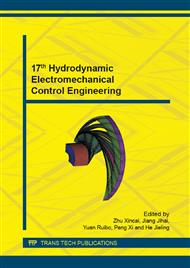p.182
p.187
p.192
p.201
p.205
p.212
p.220
p.226
p.233
Performance Comparison of Displacement and Speed Control in Electro-Hydrostatic Actuator
Abstract:
In recent years, power by wire (PBW) technique is developed in the European and American aviation field, and one of its important bases is electro-hydrostatic servo technique. In this paper, speed controlled and displacement controlled electro-hydrostatic actuation systems are modeled and simulated, by comparing their Bode graphics and time-zone respond curves, which shows that displacement control has small load inertia and high gain, so its dynamic performance is better. Thus, conclusion can be drawn that speed-displacement composite control may indeed improve the dynamic performance of electro-hydrostatic actuator.
Info:
Periodical:
Pages:
205-211
Citation:
Online since:
July 2015
Authors:
Price:
Сopyright:
© 2015 Trans Tech Publications Ltd. All Rights Reserved
Share:
Citation:


